Preliminary Scoring
[As noted, SrPinguino asked me to help with judging. I do not know if SrPinguino will also be reviewing or what he will do with this review, but here is my judging of the cars I received, for whatever it’s worth.]
Troopers Esposito and Ryan have been assigned to perform an initial review of the candidates for the initial block of new patrol cars for the Texas State Police. Ryan’s desk is covered in a pile of marketing materials, spec sheets, and background information on each of the candidates, and the manufacturers have provided test vehicles that are parked outside. Ryan has already pored through all of the materials, and now Esposito is coming to meet him to talk over their options to recommend to the higher-ups.
Eposito walks up and plops down in the chair across from Ryan at his desk. “OK, Ryan, what do we got?”
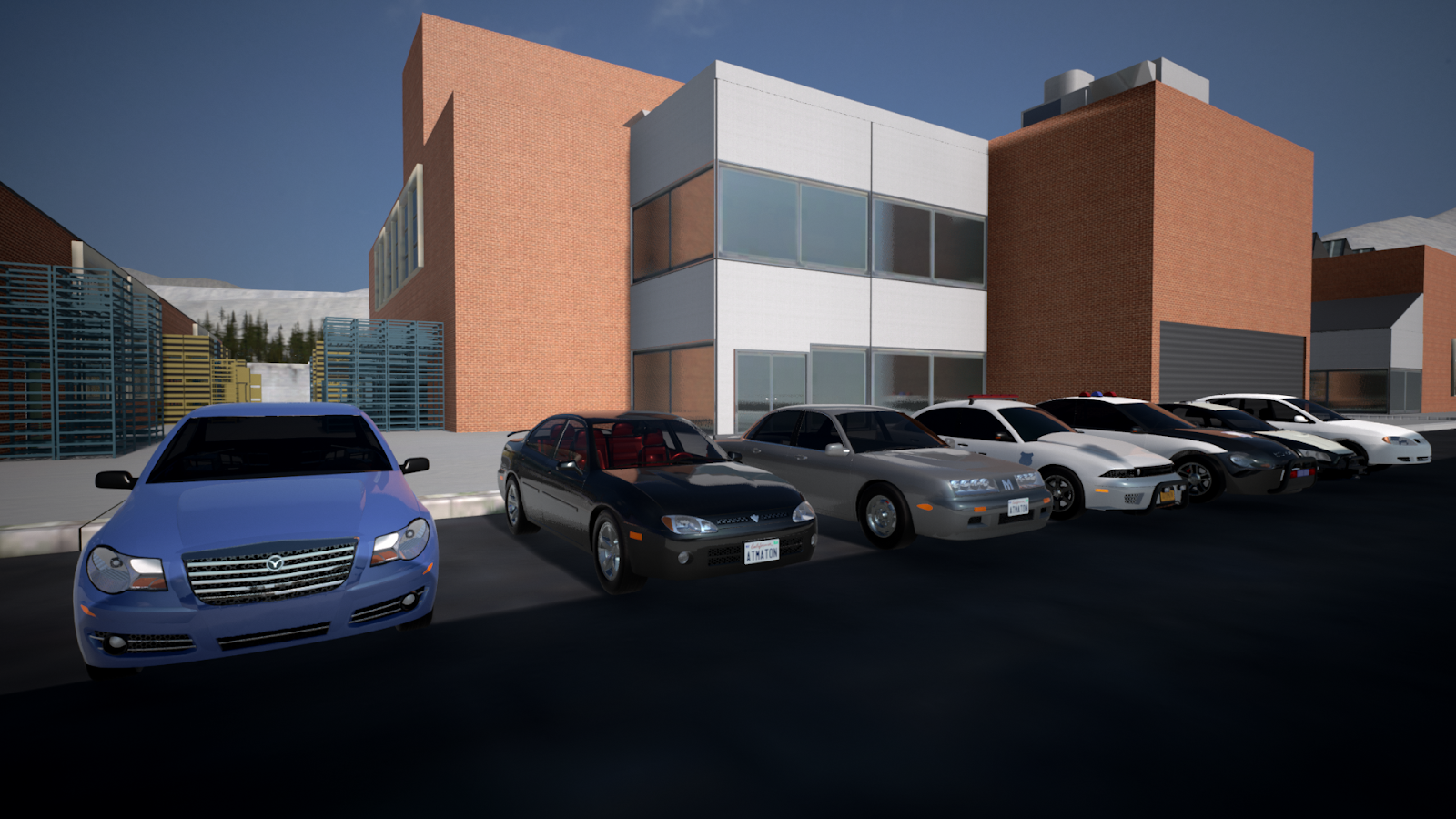
Pictured (left to right): Volitor Metropolitan 3.6 Limited, Vermillion Valor 354 Sport, Megocom Jetta Burnout, TBC Suide ST07, Arnoc Interceptor, Van Zandt Cavalier Intender, Flint Sentinel Interceptor. Not pictured: Wells Lucida PPV
Note: Reviews are not in particular order by scoring. Overall scoring/ranking will be shown at the end.
Volitor Metropolitan 3.6 Limited (by @hilbert)
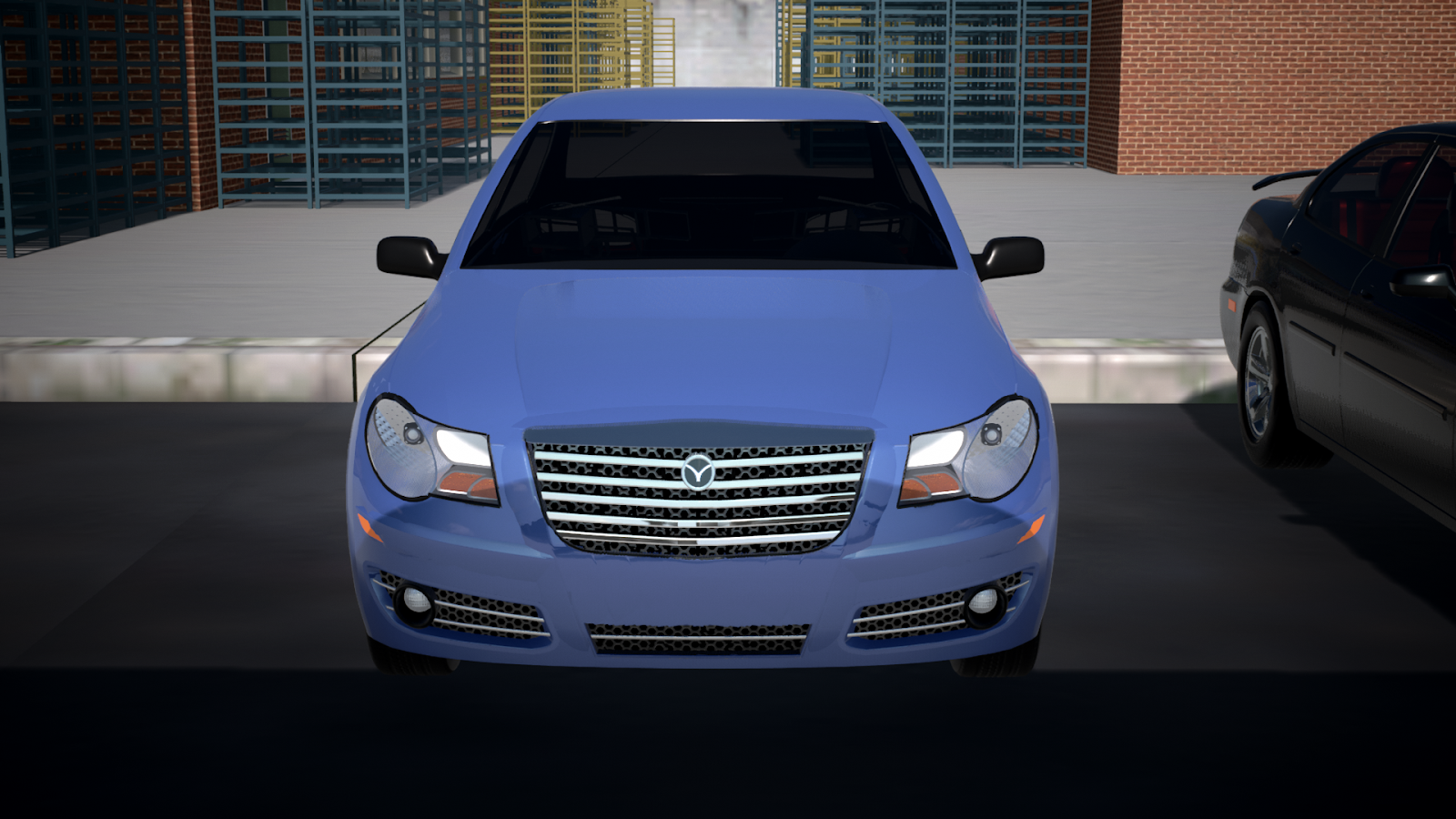
Price: $24,000
0-60: 7.43 seconds
Top speed: 170 mph
Max Cornering G’s (20 meters): .670
Max Cornering G’s (200 meters): .655
Combined MPG: 22.0
“Hmm, looks like the specs are decent but not the greatest,” says Esposito. “The gas mileage isn’t bad, so I’m sure the accountants will be happy with that, and 170 mph should be enough speed if you need it. The 7.4 seconds to 60, though…It’s not exactly fast, but I wouldn’t say it’s slow either.”
“Yeah, it’s actually the slowest of the bunch,” Ryan chimes in.
“And look at the skidpad testing too. Those numbers don’t exactly give me confidence in its cornering abilities.”
“Yeah, again, that’s another performance number that’s the lowest of the bunch.”
“OK, well there’s got to be something good about this one other than the gas mileage, right?
“Well,” says Ryan, “we’ll have to see what it’s like when we get it out on the road later, but I talked to our mechanic who said these cars are known for being decently reliable–although not compared to the other cars we’re looking at, and that they’re known for being pretty easy and cheap to fix. It also has decent safety ratings, although almost all of these cars have advanced safety features and pretty good safety scores.”
Esposito raises his eyebrows. “So basically, on paper, we have a car that’s slow, can’t corner well, is less reliable than the others we’re looking at, and isn’t a standout on safety, but it’s got good gas mileage and is cheap to service?”
“Yeah, I think that pretty much sums it up.”
“Well,” Esposito sighs, “that’s not a very promising start, but maybe this thing will be great when we get it out on the road later.”
Test Drive
Ryan and Esposito find the Volitor pleasant-looking, although not exactly striking. The interior isn’t particularly spacious, but they’re astonished to find something in this price range with plush, leather seats, and they spend a while playing with the high-tech touchscreen and voice controls on the radio. They’re impressed by these features but aren’t exactly sure what the point of these would be in a police vehicle, or if they’d even be included in the actual fleet purchase model. Once on the road, the Volitor struggles with sharp corners but is generally decent to drive and supremely comfortable, with its soft suspension soaking up bumps. It handles a dirt road with ease, with the on-demand all-wheel drive kicking in a few times when the wheels start to lose traction.
The Verdict
Ryan and Esposito aren’t quite sure what to make of this one. It’s a supremely comfortable cruiser, but that’s in part due to some high-tech features that seem unnecessary in a police car and that they doubt would actually make it into a fleet model. It’s also slow and can’t take turns with much speed, and they’re not sure if it has the performance needed for everyday police use. The off-road capability is outstanding for a sedan but almost seems overkill for something that won’t see much offroad use. In general, the car seems to under-deliver in some of the most important areas. In fact, it delivers by far the worst overall performance metrics, and while none of these cars are particularly unreliable, it’s also the least reliable model. On the other hand, it seems overkill in areas that are less important–like superior off-road ability and an extra-plush interior with a premium infotainment system. It’s also helped by being the third-best on gas and the third cheapest to service. Ryan is thinking of going to the Volitor dealership over the weekend to look at one for himself as a comfortable family car, but they’re not sure if the Volitor has what it takes as a police cruiser.
Vermillion Valor 354 Sport (by @Flingang)
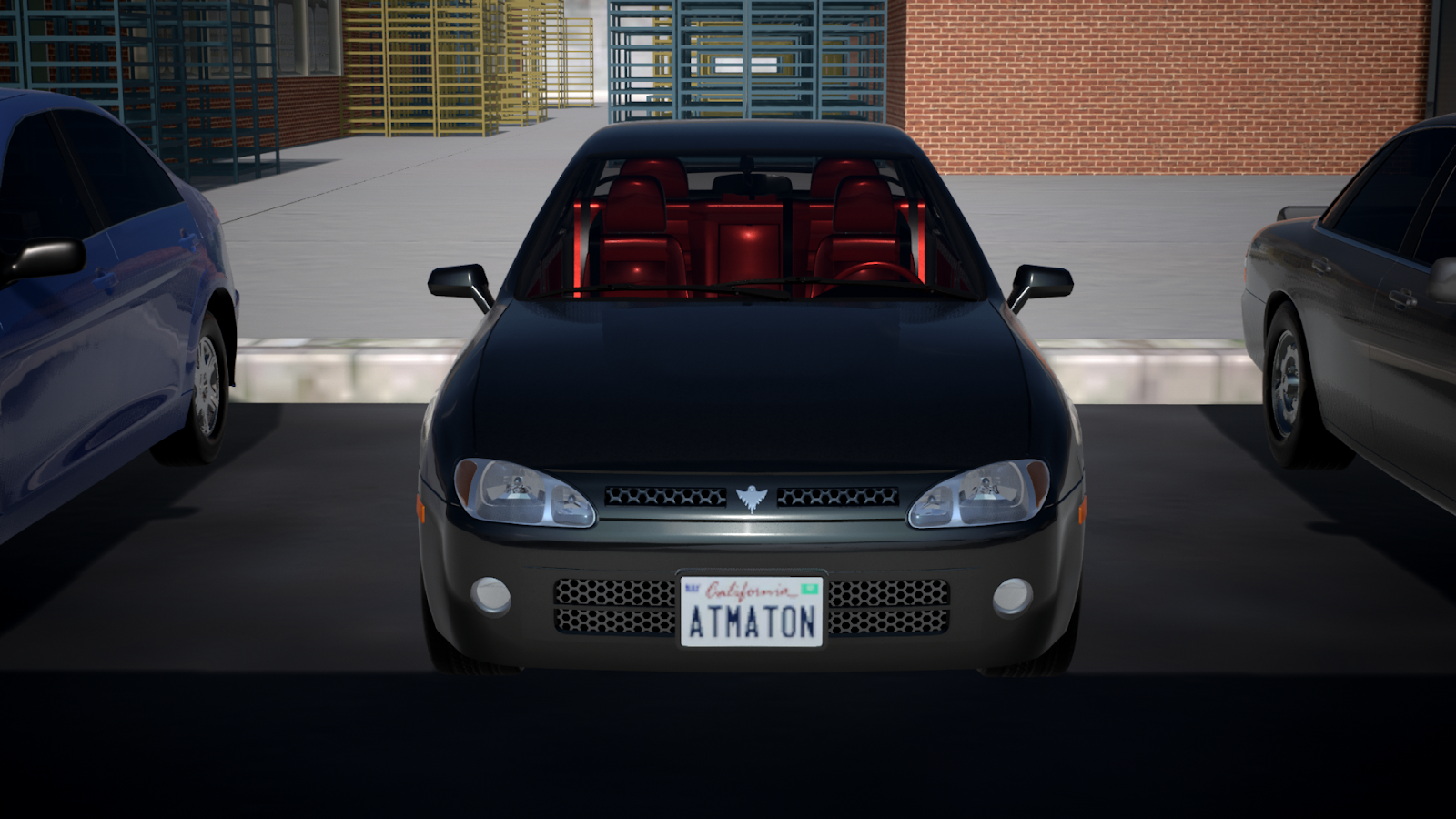
Price: $25,000
0-60: 6.45 seconds
Top speed: 164 mph
Max Cornering G’s (20 meters): .800
Max Cornering G’s (200 meters): .766
Combined MPG: 17.8
“OK,” says Esposito, “this is a little more what I’m talking about in the performance department. It’s still not blowing me away with that 0-60 time or the skidpad numbers, but they’re better. And 164 miles per hour seems like plenty of speed.”
“This one is pretty much dead average in the performance department,” says Ryan, glancing at a spreadsheet on his computer monitor. “Yeah, almost exactly average for 0-60 time and cornering G’s. It’s a little bit slower than all the other cars at the limit, but most of the cars are somewhere right around 170 in the top speed department, so it’s not a big disadvantage for this one.”
Esposito does a double-take looking at the spec sheet. “Ouch, that gas mileage seems pretty bad. I don’t think the accountants will like the money that’s going to have to be spent on gas on this one.”
“A lot of these cars don’t have great gas mileage, so this is actually only a bit below average compared to the other cars but, yeah, it’s not great on gas. And the mechanic said this car pretty much has the same reputation for reliability as the Volitor, which means it’s not bad but on the lower end compared to this bunch. He also said it’s on the more expensive side to service.”
“What about safety?”
Ryan checks his computer screen. “Safety is good on the whole, but it’s just about average for this group.”
Esposito shrugs. “Well, two down and I’m still waiting for something to blow me out of the water. At least on paper, it seems like this one is close to average in most areas but isn’t great on gas and is a bit expensive to repair.”
Ryan nods. “That about sums it up.”
Test Drive
Ryan and Esposito like the clean, sleek lines of the Vermillion. Ryan describes it as a car that “just looks fast.” The inside is a bit cramped but has decent finishes and a fancy satellite navigation system. Esposito starts the engine, which burbles to life with a delightful V8 roar. Esposito finds himself enjoying driving the Vermillion because it just has the feel of a sports car–but this also means laboring with a manual transmission and having to rein in some oversteer from the rear wheel drive. It manages to make its way down a dirt road, but they wouldn’t want it to have to handle any more offroading than that.
The Verdict
Even though they like the looks of the Vermillion and agree that it delivers an enjoyably sporty driving experience, they’re inclined not to recommend it to the higher-ups for consideration. The Vermillion isn’t by any means a bad car, and it scores just about average in most categories. The problem is that it doesn’t really stand out in any category, and its sporty nature with RWD and a manual transmission makes it noticeably more labor-intensive to drive than most of its competitors. The “sporty” feel of driving it also doesn’t translate into an advantage in actual performance numbers. Esposito is planning to recommend one to his cousin who’s looking for a sporty but practical car, but they’re doubtful that they’ll end up recommending this one to their boss.
Megocom Jetta Burnout (by @LennoxV10)
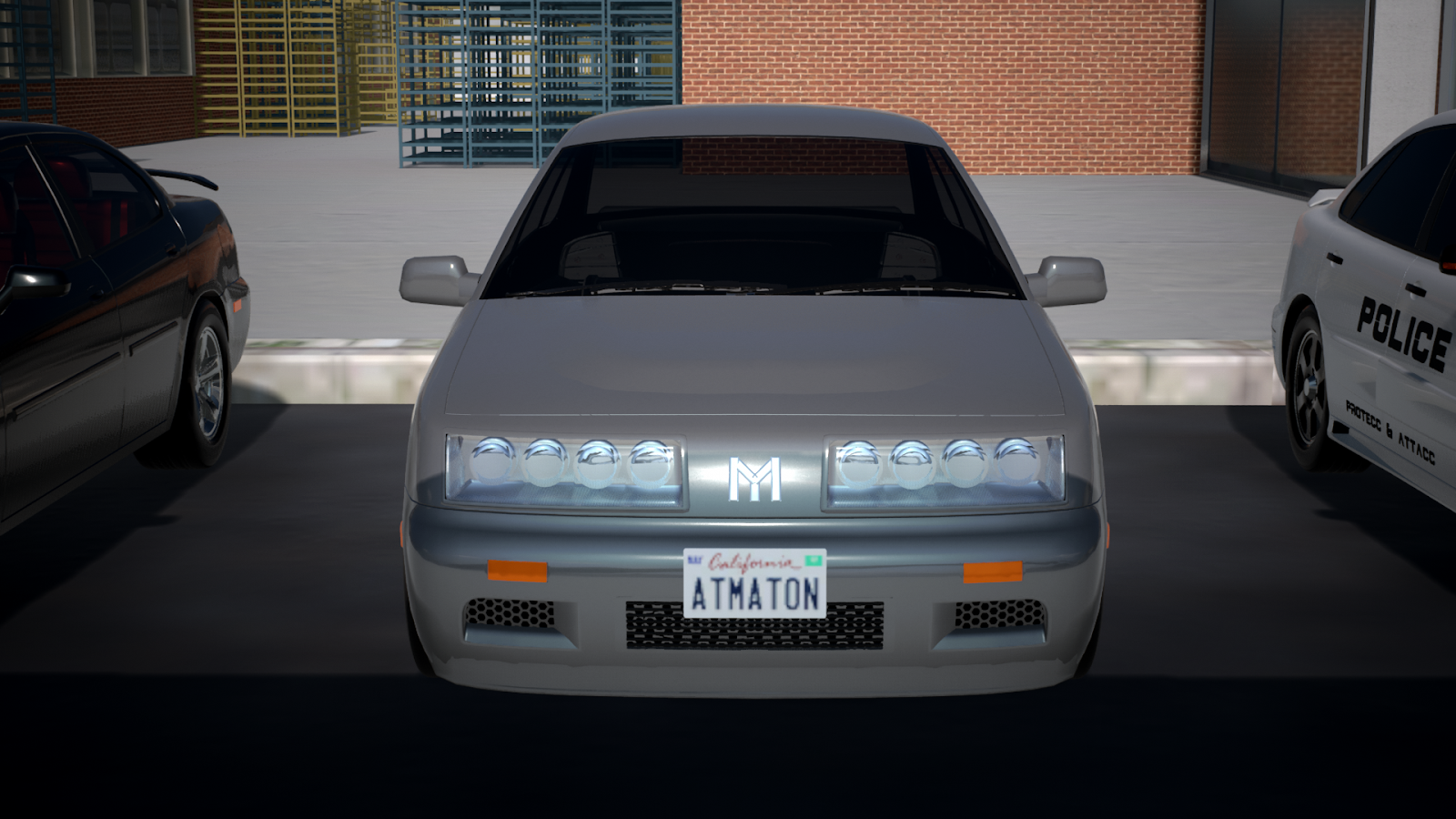
Price: $20,500
0-60: 6.84 seconds
Top speed: 168 mph
Max Cornering G’s (20 meters): .856
Max Cornering G’s (200 meters): .848
Combined MPG: 29.0
“Wow, the accountants are going to like this one,” says Esposito. “It’s over $4,000 under budget and gets 29 miles per gallon? They’ll save tons of money on buying these and gassing them up!”
“Yeah, I haven’t even talked about the prices of the others because they’re all pretty much right below the budget limit between $23500 and $25000, but this one is a lot cheaper than the others and gets by far the best gas mileage. I think the next best gets about 22 miles per gallon. The mechanic also said it’s the second-most reliable of the bunch and cheaper than average to service. So I wouldn’t be surprised if the accountants would pick this one,” says Ryan.
“But how’d they make it so cheap? Is it built out of toothpicks?”
“It’s actually pretty sturdy. Safety ratings are a little above average for the bunch.”
“Huh,” says Esposito, “and it’s also pretty decent in the performance department. The 0-60 time doesn’t blow me away, but those are the best skidpad numbers I’ve seen so far.”
“Yup, they’re in the top two or three best skidpad numbers in the group.”
“So this one seems pretty promising on paper. Hopefully it actually drives OK.”
Test Drive
Ryan and Esposito repeatedly walk past the Megocom in the parking lot because they are looking for a new model; when they finally find it, Esposito expresses surprise that the Megocom isn’t actually a model from the late 80’s or early 90’s. They are also concerned that the car appears to be missing the third brake light and the rear side reflectors required by federal law; they’re not sure if that was some sort of manufacturing error with this car, or if they’ve been sent some sort of pre-production prototype. Ryan describes it as an “odd duck” that looks simultaneously bland and oddly proportioned, especially thanks to its extremely wide headlights and massive front and rear badges.
Once they get inside, the Megocom is pretty much the government-spec interior they expected, with a basic sound system and ordinary cloth seats. It’s pleasant but unremarkable to drive, with a common automatic transmission and FWD setup. The soft suspension soaks up bumps for an extremely comfortable ride that Ryan describes as “like floating on clouds.” It handles a dirt road easily, thanks in part to a limited slip differential.
[Note: This car would have been insta-binned under many challenge rulesets for (1) not following the naming convention and (2) failing to have necessary road-legal features–particularly the third brake light. The ruleset in this contest, however, did not set a specific naming convention and did not specify that the car had to have street-legal features or allow for binning on a realism basis.]
The Verdict
Like the Volitor, Ryan and Esposito just aren’t sure what to do with the Megocom. They feel like they should like it. Its performance is overall above average, primarily helped by its good cornering scores. In fact, aside from being a little on the slow side in terms of straight-line speed, it is at or above average in every category. It also absolutely obliterates the competition in terms of purchase price and gas mileage, while also being the second least expensive car to service. But the Megocom doesn’t seem to be road-legal in its current state, and its design seems at least a decade out of date and just doesn’t seem to look the part. They know that looks shouldn’t overshadow the Megocom’s other fine qualities, but they just find it hard to picture themselves patrolling in one of these.
TBC Suide ST07 (by @Ananas)
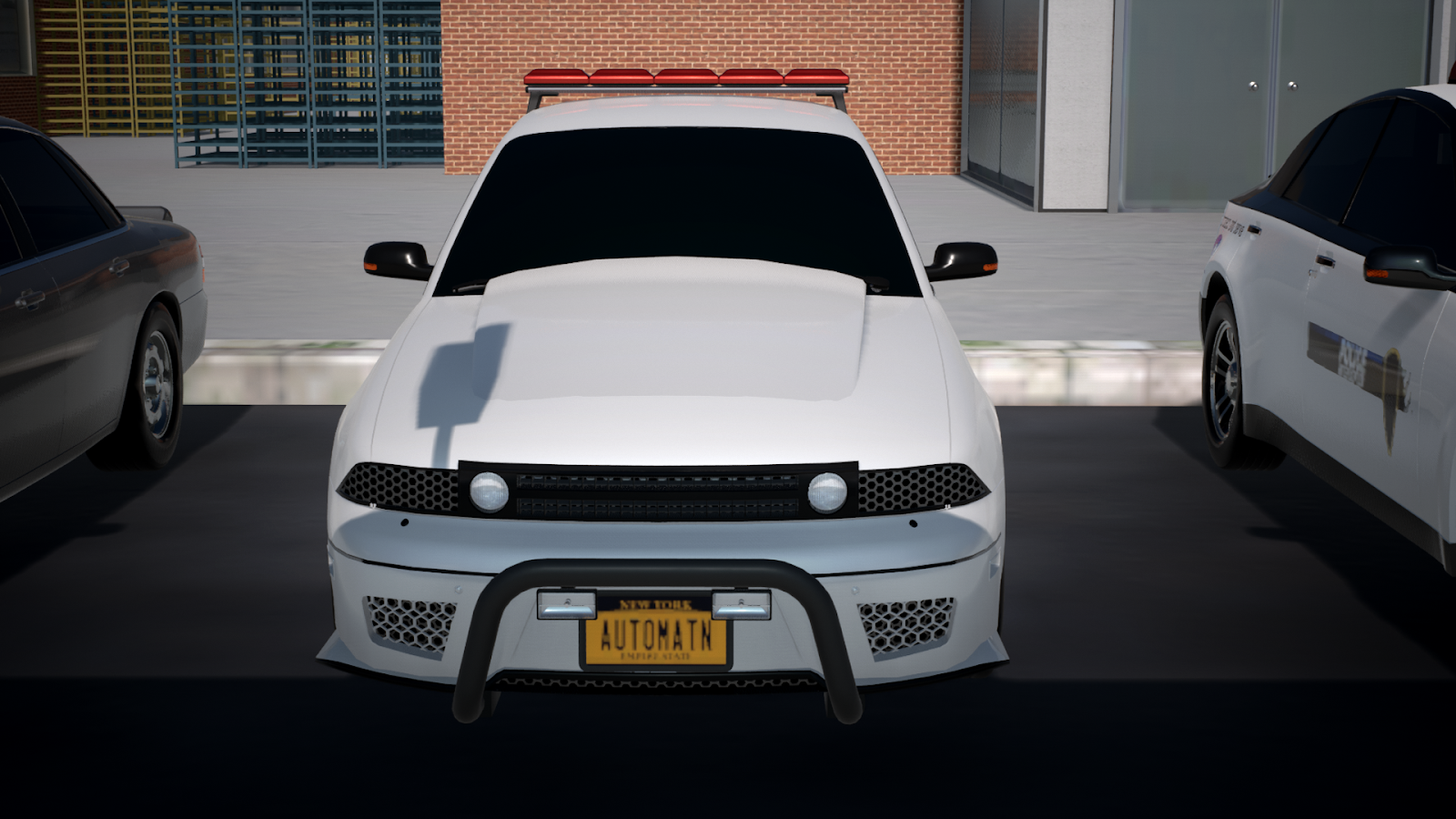
Price: $24,500
0-60: 5.64 seconds
Top speed: 177 mph
Max Cornering G’s (20 meters): .768
Max Cornering G’s (200 meters): .766
Combined MPG: 14.9
“Now that’s the kind of speed I’m talking about!” Esposito stabs his finger at the stat sheet. “0-60 in under 6 seconds!”
“Slow down there Espo,” says Ryan. “Yeah, the 0-60 time is nice, but there are a couple faster ones.”
“Wow, well this one seems pretty quick.” Esposito’s face turns to a frown. “But those skidpad numbers don’t seem great.”
“It’s just a little below average when it comes to cornering,” says Ryan. “And outside of performance, it actually has the second-worst safety ratings of this group and is in the bottom tier for reliability. Also, I think the mechanics might kill me if I recommend this one to the brass. Actually, the accountants might kill me too. Apparently it’s about twice as expensive to service and repair as the rest of the cars. Something about a turbocharged V8 engine that’s absolutely shoehorned into the engine compartment, so it takes forever to get at some of the engine components.”
“Ouch,” says Esposito. ”I also just noticed the gas mileage. 14.9 miles per gallon? That’s got to be the thirstiest of the bunch!”
“It is.”
“Well, sounds like we would have a hard time convincing the accountants and mechanics on this one, even if it turns out to be great on the road.”
Test Drive
Ryan and Esposito love the aggressive front fascia of the TBC, although they’re a little confused about where the headlights are and feel like the car’s proportions are a little squished in the rear. They are once again surprised to find plush leather seats and a premium navigation system in a fleet vehicle, and they assume these features will be stripped out as unnecessary frills in the actually purchased version. Once they’re on the road, the TBC feels outstandingly well-balanced and easy to drive–better than any car in the group by a wide margin–likely thanks to its all-wheel drive system with a limited slip differential and active sway bars. The ride is just a bit stiff–not overly so, but just enough so that it doesn’t give a cloud-like experience–and overall comfort is good thanks largely to the plushly finished interior. The TBC manages a dirt road competently, again likely helped by its all-wheel drive.
The Verdict
Ryan and Esposito love driving the TBC, which they agree is by far the easiest to drive and also probably the second most comfortable to ride in, just behind the Megocom. It’s also a top three performer when it comes to straight-line speed and is competent in all other respects. It probably would be one of their top picks if it weren’t for its extremely high service costs and bottom-of-the barrel fuel economy. Ryan and Esposito agree that while the TBC is a good car, it’s not an outstanding enough car to overcome the objections that would inevitably be made to its elevated operating costs.
Arnoc Interceptor (by @PhirmEggplant)
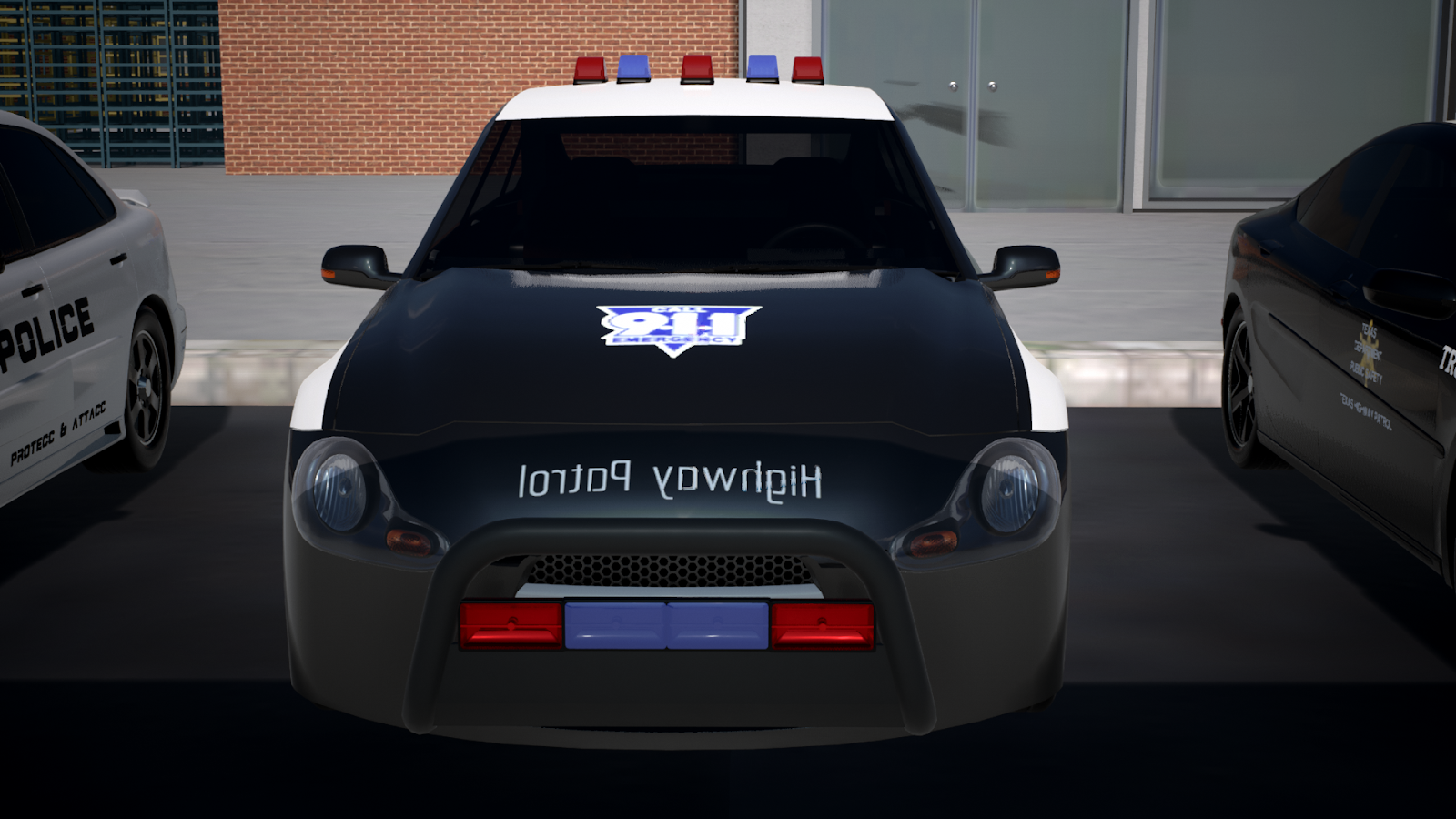
Price: $25,000
0-60: 5.28 seconds
Top speed: 184 mph
Max Cornering G’s (20 meters): .723
Max Cornering G’s (200 meters): .700
Combined MPG: 16.7
Esposito’s eyes widen as he looks at the spec sheet. “Wow, this one’s a speed demon! 0-60 in under 5.3 seconds and a top speed of 184 miles per hour! This can get up and go!”
“Well, it is the quickest to 60 and the fastest of the group–as long as you’re going in a straight line,” Ryan says.
Esposito frowns and looks more closely at the spec sheet. “Ouch, those skidpad numbers aren’t very good.”
“Nope. Second worst of the bunch. Only beats out the Volitor in cornering G’s.”
“And the gas mileage doesn’t seem very good.”
“Correct again. Only the TBC is thirstier.”
Esposito looks at Ryan. “So is there any reason why we should be considering this thing?”
“Well,” says Ryan, “it’s by far the safest of the bunch. It says something in there about an advanced high strength steel chassis, which I think is why it has such good safety ratings. But the mechanic said it’s middle-of-the pack in terms of reliability and is a little more expensive to service than most of the other cars.”
“So it sounds like on paper it has straight-line speed and safety going for it, but pretty much everything else is average or below average. Doesn’t sound too promising unless it can really prove itself on the road.”
Test Drive
Ryan and Esposito like the body shape of the Arnoc, but they’re not in love with its front headlights. They also appreciate that this tester was actually provided with a police livery and equipment. The interior is reasonably well appointed and even has a touchscreen system that Ryan and Esposito fiddle with–but they’re not sure why such a high-end feature is being put in a police car, and they doubt that the feature will be included in the actual fleet purchase. The Arnoc handles reasonably well but feels just a little bit harder than most other cars to handle through curves, probably due to its limited cornering grip. The ride is comfortable, with the suspension tuned to be soft enough to soak up bumps but not so soft that it wallows and rolls through bumps and corners. They agree that while it doesn’t have the plush interior of some of the other cars, it’s one of the more comfortable rides of the bunch. It also navigates a dirt road easily, inspiring confidence that few of the other cars have.
The Verdict
Ryan and Esposito are on the fence about the Arnoc. It’s the best of the bunch in straight-line speed and safety, it’s among the most comfortable and most off-road capable vehicles, and it is competent in many other areas. But its overall performance is limited by its subpar cornering grip, and operating costs are likely to be high; it’s the third-most expensive to service and has the second-worst fuel economy.
Van Zandt Cavalier Intender (by @VanZandt_Breda)
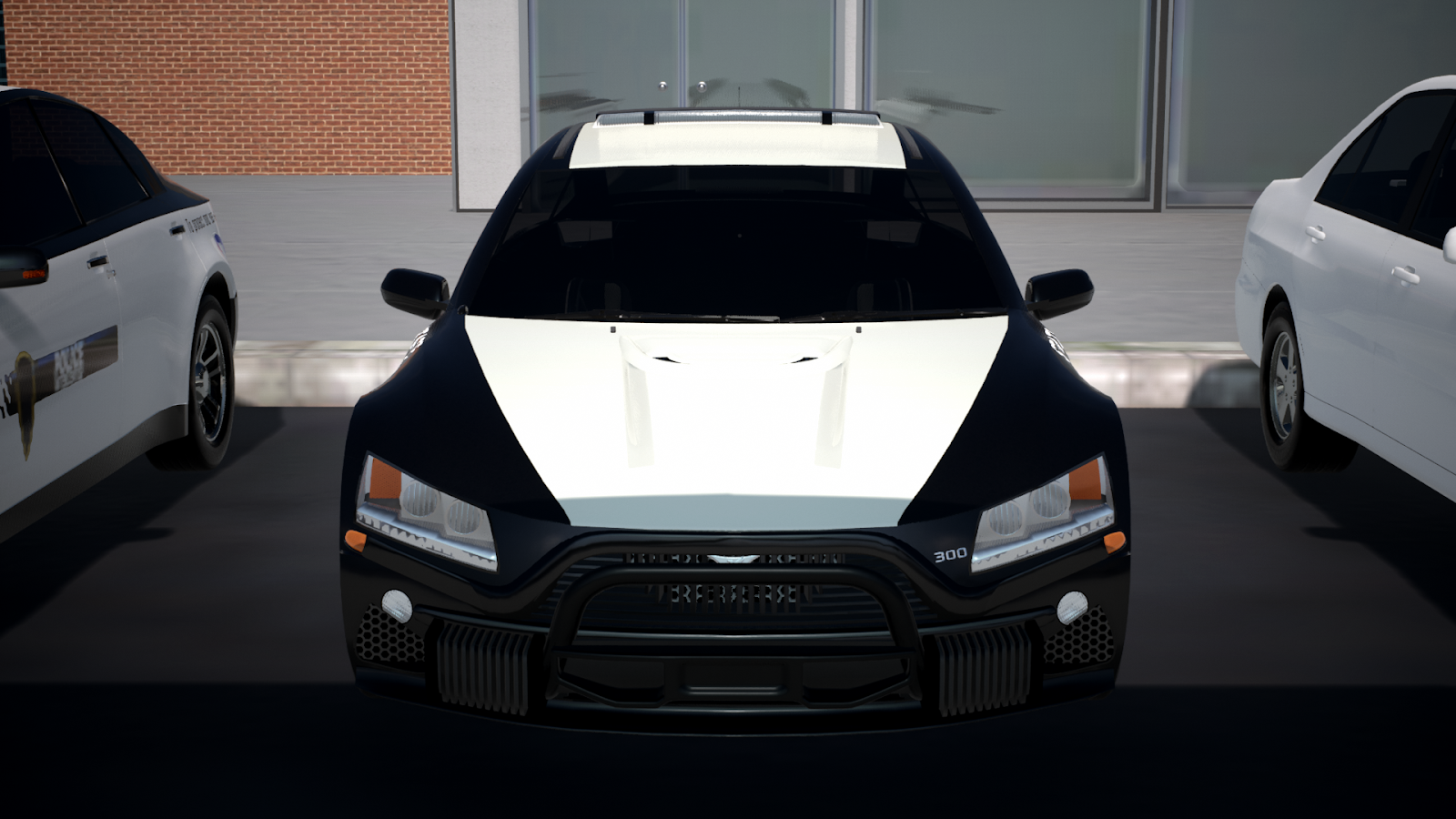
Price: $23,500
0-60: 5.47 seconds
Top speed: 170 mph
Max Cornering G’s (20 meters): .942
Max Cornering G’s (200 meters): .903
Combined MPG: 20.3
“Woah, this one’s got some real performance numbers!” Esposito skims down to the bottom of the spec sheet. “Just a hair slower than the Arnoc to 60, and it’s got all kinds of grip on the skidpad!”
Ryan nods in agreement. “I’d say this is the best performer of the bunch by a large margin. The top speed’s a little low, but otherwise it’s the second-quickest to 60 and is by far the best when it comes to cornering.”
“What about the practical stuff? Safety, reliability, service costs, that kind of stuff?”
“It’s apparently got the second lowest safety ratings of the bunch but, again, all of these cars score well on safety. It’s one of the more reliable cars here, and it’s apparently pretty average when it comes to servicing. The gas mileage is also a little better than average for the group.”
“I can’t wait to get out and drive this thing! If this thing is as good on the road as it is on paper, it’s a sure winner!”
Test Drive
Esposito’s eyes widen when he sees the Van Zandt in the parking lot. “Now that’s a police car!”, he exclaims. Ryan nods in agreement. They both absolutely love the styling of this car, complete with the effort the manufacturer took to mock it up in Texas State Patrol livery. They spend a good amount of time just walking around the car oohing and aahing before they get in.
Then they get inside the car–and their enthusiasm comes to an abrupt halt. Ryan describes the thinly padded seat as “the worst thing I’ve sat on since the bench seat in my grandpa’s old Flint pickup.” Esposito points at the door, “Bro, is that a crank window!?” They are used to government-spec interiors with industrial-quality fabric and the gaps where every optional feature would be covered up with cheap plastic, but this is, well, even less than government spec. Once they actually start driving, the Van Zandt is quick and carves corners with ease as the performance standout of the group, and the car is reasonably well-mannered, even with a rear-wheel drive setup. But the ride is flat-out unpleasant. The suspension is a little on the stiffer side, and the suspension setup is basic. With thin tires and thin seats, there’s just not much there to absorb the bumps other than Ryan and Esposito’s bodies. It also struggles mightily down a dirt road–so much that Ryan and Esposito at one point think they might have to call for a tow truck, before finally managing to push the car out of a rut.
The Verdict
Ryan and Esposito were both tremendously excited about this car–until they got inside it. It offers by far the best overall performance package of any of the tested cars, it scores competently in a lot of other important categories, and it just looks right. But even though comfort and off-road ability aren’t high priorities, the Van Zandt falls so far behind the pace in these categories that they aren’t sure they can recommend this car to their boss. They just can’t see troopers who spend hours in their cars being at all satisfied with the rock-bottom interior and stiff ride. And Esposito jokes that the only thing a criminal fleeing one of these would need to do to escape is to “drive on some grass.” They wanted this car to be the one–but they’re fairly certain it isn’t after looking at the complete package.
Flint Sentinel Interceptor
[Note: Yes, since I am also an entrant in this contest I am scoring my own car as well, but I developed the scoring rubric before receiving any cars, have treated my entry equivalently to the others, and have not updated the design since I submitted it. If you have any concerns, please feel free to message me.]
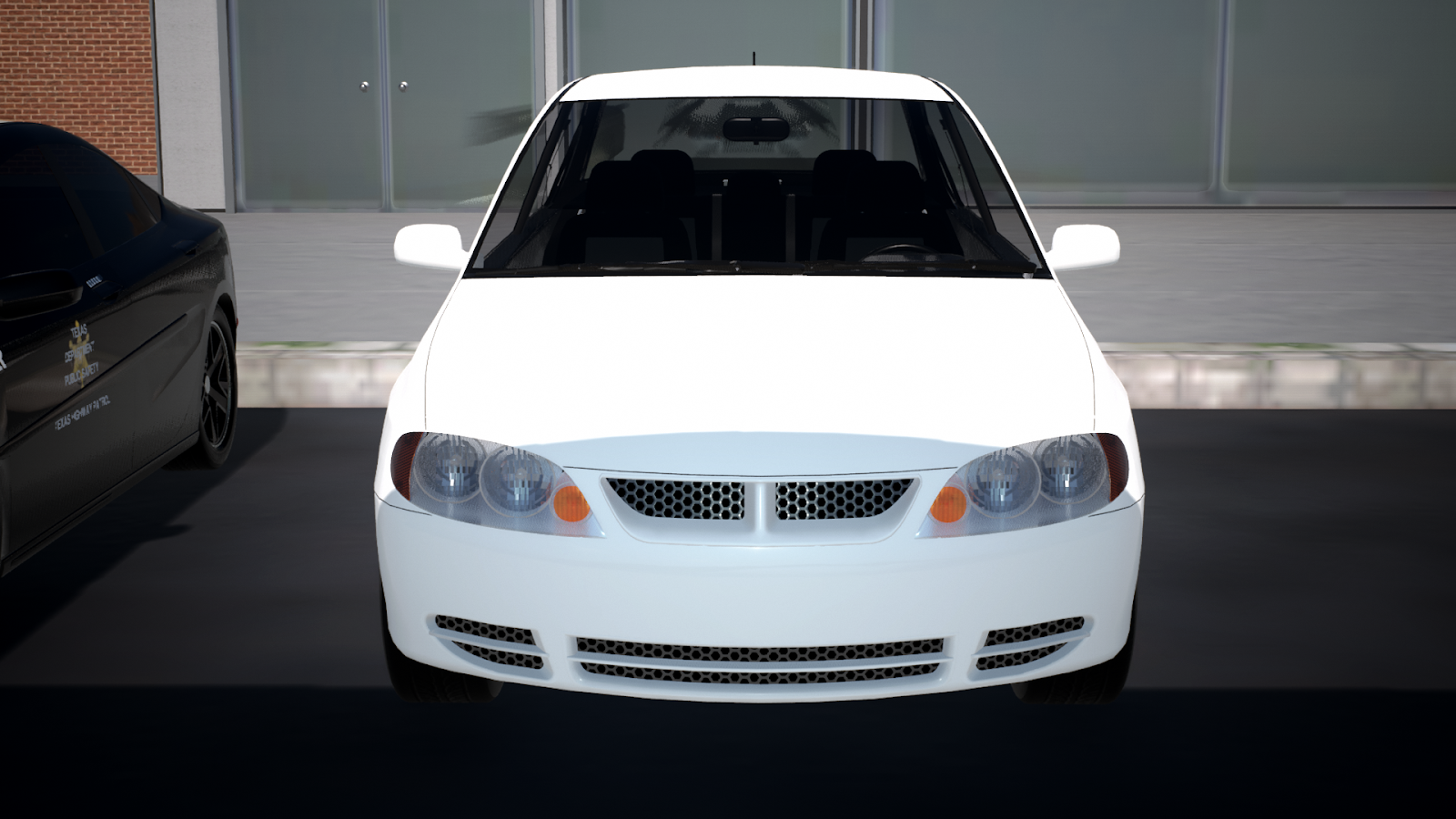
Price: $24,200
0-60: 6.97 seconds
Top speed: 173 mph
Max Cornering G’s (20 meters): .832
Max Cornering G’s (200 meters): .802
Combined MPG: 19.7
“Well,” says Esposito, looking at the spec sheet, "I guess this is enough performance to get the job done, but it’s not exactly exciting.”
“Agreed,” says Ryan. “It has the second slowest 0-60 time, its top-speed is right in the middle, and its skidpad numbers are just slightly above average. Probably what I would call a competent but not exciting performer.”
“So is there any reason to bother with this one?”
“When I spoke with our mechanic, he said that these are built like absolute tanks, so he thinks this would be the best bet for reliability, and they’re also a pretty basic design that he thinks would be the cheapest and easiest to service.” Ryan continues, “I think if the mechanics were picking what would make their lives the easiest, it would be this one. And since they’re built solidly, that also helps them be safer than most of the other cars here.”
“But,” says Esposito, “gas mileage is only OK, so even if you’d be saving money on service and repairs, it won’t be saving much money at the pump.”
Ryan nods in agreement. “It seems like there’s a theme with this one of being competent but boring, at least on paper.”
Test Drive
Ryan and Esposito at first have trouble finding the Flint in the parking lot because they keep mistaking it for a Chevy Impala from behind or a Pontiac from the front. Once they finally find the car, Esposito describes it as having “all the charm and personality of a bar of soap.” The interior is spacious but fairly basic, and the car is overall relatively well-mannered, with the exception of some noticeable torque steer from the front wheel drive under hard acceleration. The ride is a bit on the firmer side, which helps handling but makes its overall comfort level somewhat below average for the group, and a far cry from the plush Volitor and TBC. They aren’t quite sure if its performance tires will be able to handle any off-roading, but it barely makes it down a dirt road in what isn’t exactly a confidence-inspiring experience.
The Verdict
Ryan and Esposito agree that the Flint is an overall competent car, but it has a few weak points. It’s average or better in most areas and is a standout for its mechanical simplicity and durability. But it’s let down by subpar acceleration, a slightly stiff ride, and limited off-road capabilities. It also doesn’t have any charm that makes Ryan and Esposito want to root for it; it comes across as a reasonably competent tool for the job, nothing more, nothing less.
Wells Lucida PPV (by @ducethetruth100)
[Note: This vehicle was advertised and submitted as a 1997 model instead of a 2007 model. Since it was a simple fix to change the trim and variant years to 2007, I am scoring this model instead of binning it.]
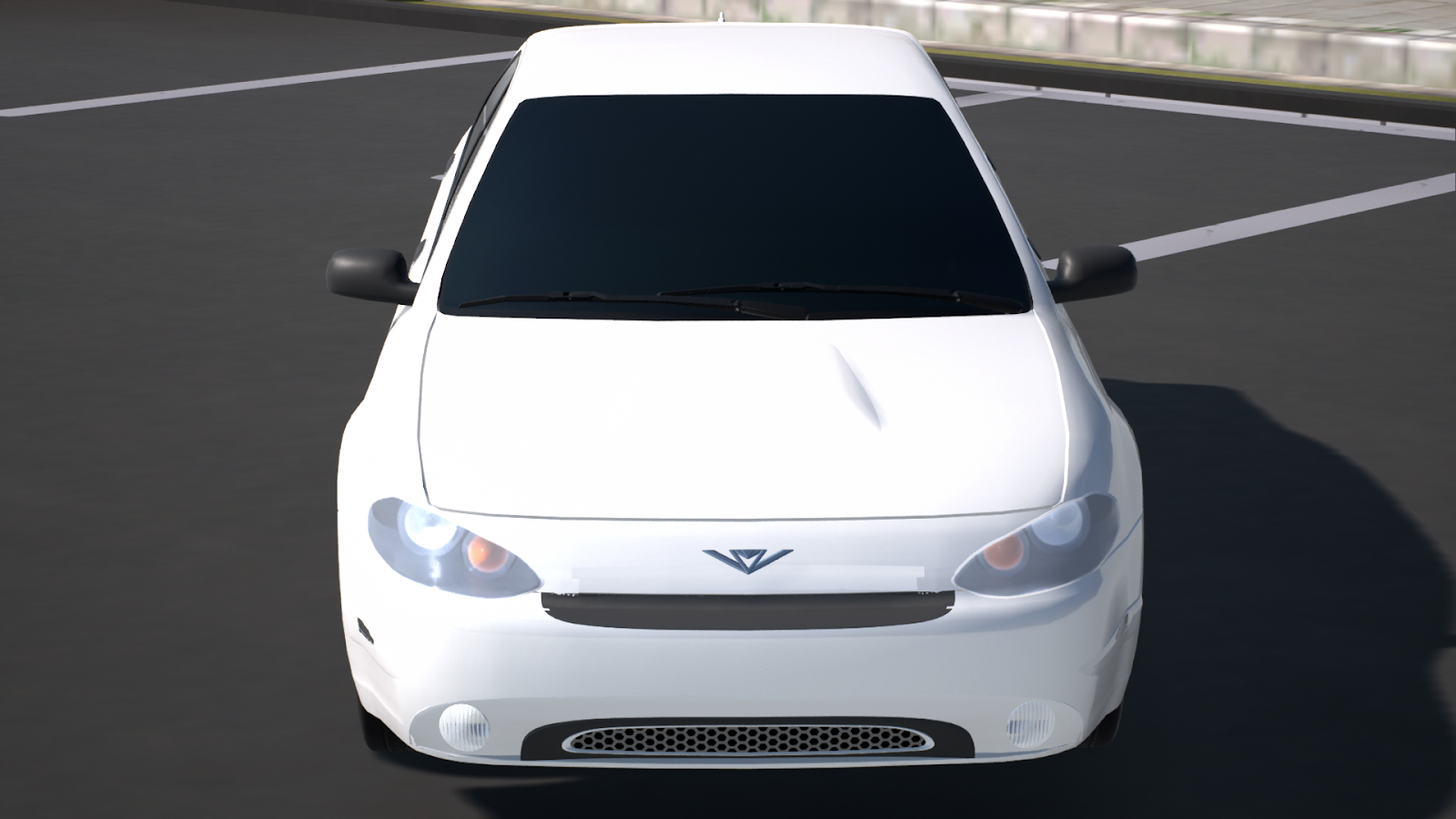
Price: $24,700
0-60: 6.05 seconds
Top speed: 176 mph
Max Cornering G’s (20 meters): .874
Max Cornering G’s (200 meters): .839
Combined MPG: 21.1
“Oh, a Wells Lucida,” says Esposito, “I think I drove one of these as a rookie. And it still looks the exact same.”
“Yeah,” Ryan chimes in, “haven’t they been selling basically the same car for like 10 years or something like that?”
“I think so. But I mean, performance-wise, I can see why you could take an approach of if it isn’t broke, don’t fix it. It’s faster and more agile than most of the other cars here, and the cornering is in the top three. What did the mechanic have to say about it?”
“Since it’s an older design, there’s just less stuff that can break on it. It’s not tops in reliability, but he said it would probably be better than most and is fairly easy to service and repair–although still probably a little more expensive than some of the other cars here.”
“Well,” says Esposito,”gas mileage is also pretty decent.” He frowns at something as his eyes move down the spec sheet. “But look at these crash ratings! All these other ones are full of 4 and 5 stars, and this one is down in 3-star territory!”
“I was doing some research on that, and apparently they haven’t updated the safety features in this one either. I heard they might even have to discontinue it soon or revise the design because it’s not going to meet some new safety standards.”
Esposito shakes his head. “Well, I don’t know if I want to be riding around in something that’s going to fold up like a tin can in a crash, but I guess we still have to give this thing a spin.”
Test Drive
Ryan and Esposito aren’t wowed by the Lucida’s look. Ryan describes it as “inoffensive,” and they put it in the same category with the Flint in terms of being rather bland and lacking in charm. Then they open the door and are greeted by the worst interior they’ve seen since the Van Zandt. Crank windows. Thin seats. Vinyl floor liner. No radio at all. At least the Van Zandt had a radio. And it looks like the Van Zandt somehow managed to actually use higher quality materials than the Van Zandt, which they didn’t think was possible. Ryan declares that “I think this interior might actually be worse than my grandpa’s old pickup!”
Once they get on the road, the car is reasonably well-mannered, similar to many of the other cars they’ve driven, even with a rear-wheel drive setup, probably thanks in part to a limited slip differential. The suspension is just a little bit stiff for comfort, but in combination with thin tires and thinner seats, riding in the Van Zandt is an unpleasant experience full of wind noise, road noise, engine noise, and teeth-rattling jolts. They agree that it is the least comfortable car they have tested. It also struggles on the dirt road, although not as badly as the Van Zandt.
The Verdict
Ryan and Esposito agree that the Lucida has solid performance and would be well-received by the accountants and mechanics for its above-average reliability and gas mileage and cheaper-than-average service costs. But the Lucida’s outdated safety features are a major drawback, and the extremely cheap interior would no doubt leave troopers grumbling about the cars if they were purchased. It’s also not helped by poor off-road ability and a general lack of charm. The Lucida might have been a more competitive offering 10 years ago, but Ryan and Esposito agree that the design has failed to keep up with the times enough for them to recommend it to their superiors.













